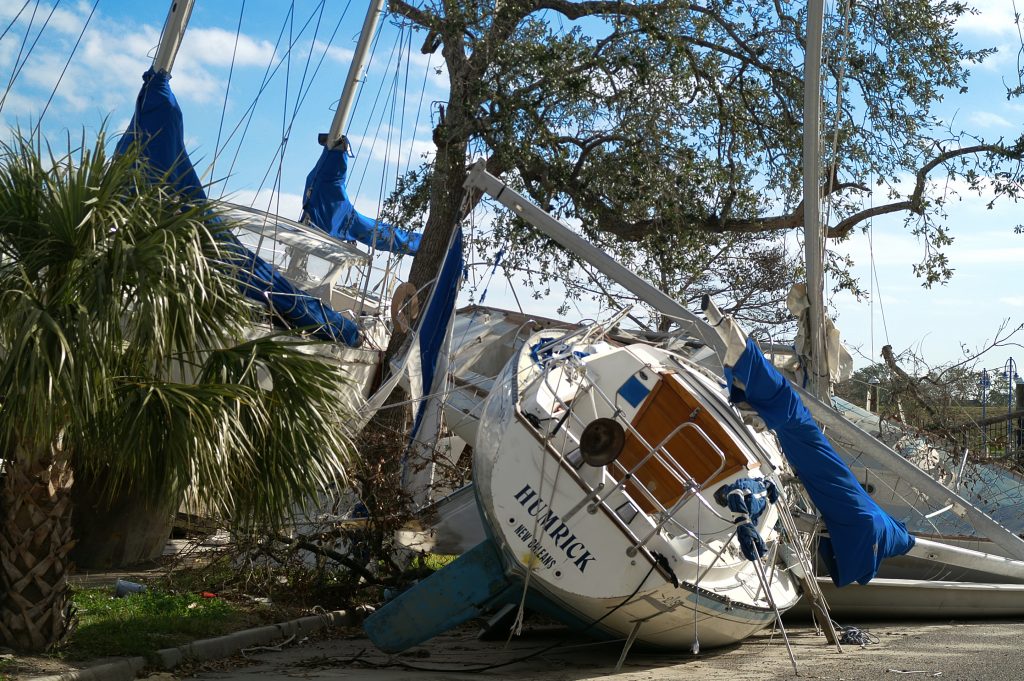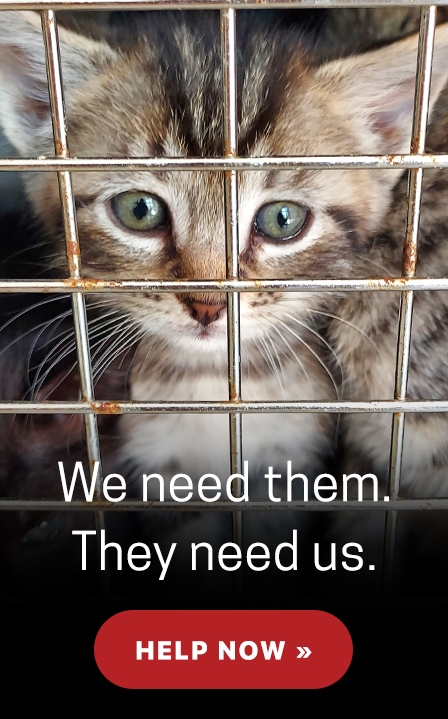As the recent flooding in Louisiana shows, disaster can hit hard and ravage entire communities—especially our furry companions. So how do you protect the animals in your care when disaster strikes?
You need a plan
Without a plan for your staff to follow, you stand the chance of losing the support of the community and your donors should a disaster strike and animals die or suffer due to lack of preparation.
Although devising a plan and training your staff takes time, it is not difficult and could save the lives of the animals and anyone else in your shelter.
To create your plan
- Ask your county’s emergency program manager to help you identify any type of disaster that is likely to occur in your area.
- Gather any relief plans developed by the local Red Cross chapter, other animal care and control agencies, armed forces, Coast Guard, and police, fire, health, wildlife, and agriculture departments, so you know who to turn to for specific resources and do not duplicate their efforts.
- Discern what will be affected and for how long in each disaster. Include facilities like laboratories, boarding kennels, stables, visiting fairs, farms, stockyards, and animal collectors.
- Use detailed topographical maps from your state’s Office for Emergency Services to help you choose locations for command posts, animal housing points, transportation routes, and equipment storage and distribution.
- Find several spaces in the areas not likely to be affected by each disaster where you can house stranded animals or those left in your care by owners. Allow for confinement, feeding, and watering of each animal, as well as cleaning and disinfecting of the cages, litter boxes, and bowls.
- Choose some reliable, capable people from your staff to make up a Disaster Action Team. Make them the leaders in an organizational chart for staff to follow only during a disaster.These key people are responsible for:
- Assessing the damage
- Acquiring housing for the animals
- Scheduling and supervising staff and volunteers
- Keeping records and retrieving those that may have been lost in the disaster
- Arranging for the donation, shipment, and storage of supplies and equipment
- Transporting people and animals
- Handling public and media relations
- Setting up and monitoring communications
- Documenting events, through photography and writing, to help evaluate the plan after the disaster and ask for assistance from foundations and organizations
- Develop a list of trained staff and volunteers, with several backup teams, to collect and handle all types of animals, such as livestock, pets, and wildlife. Rescues may be necessary, as well as pick up and disposal of dead animals. Should a major disaster strike your community, remember that your staff and volunteers may be injured, killed, or have lost all they own and have to arrange care for their families and animals, so create many backup squads of trained, capable people you can rely on.
- Have the vehicles, drivers, handlers, and cages ready to transport animals to the evacuation site.
- Develop methods of identifying and recording stray and owned animals that come in after the disaster if your shelter is inaccessible. Even paper and pens may be scarce.
- Establish several sources, like manufacturers, distributors, and donors, for food and water, along with weatherproof and verminproof storage.
- Organize medical care and supplies, from vaccinations to surgeries, for all the types of animals you might encounter.
- Confirm sources for boats, helicopters, and snow and off-road vehicles to distribute resources or search for and rescue stranded or isolated animals when regular routes are blocked or flooded.
- Train everyone (through FEMA or the Red Cross) involved in implementing your disaster plan in first aid for humans and animals and to cope with and recover from disasters.
- Obtain cellular phones, radios, walkie-talkies and any other communications equipment you might need if regular phone lines are down.
- Devise a way to let the public know where to get supplies and medical services for their animals if television, radio, newspapers, and/or telephones are out.
- Arrange to bypass regulations that might hinder your access to money because, although you can get many items and services donated, there will be some things that you will have to pay for right away.
Where you can get help
Before a disaster strikes, contact American Humane for forms, training materials, and consultations to help you create a plan.
If disaster does strike, let us know what you need before, during, and after the disaster. We can help provide manpower and find supplies based on their availability and necessity—as we’ve done to help the animals struggling in Louisiana.


